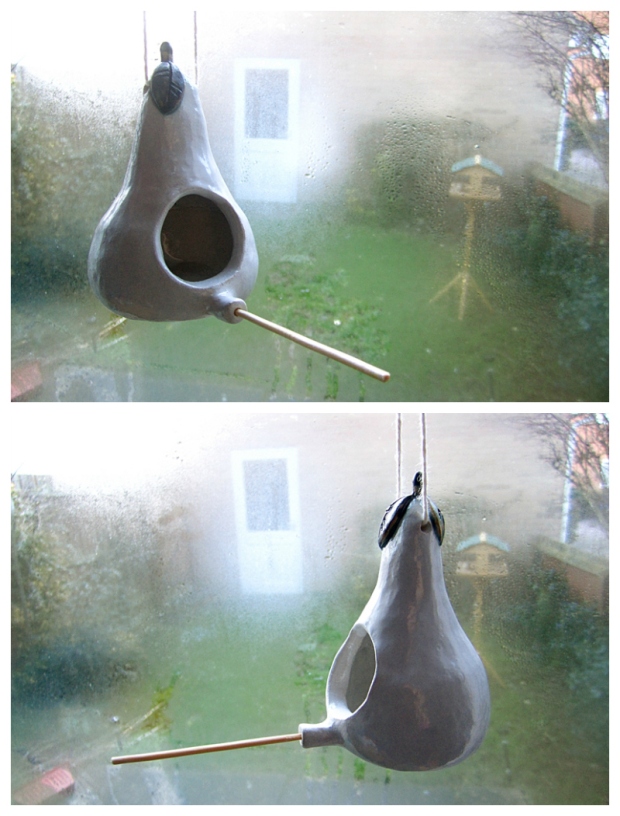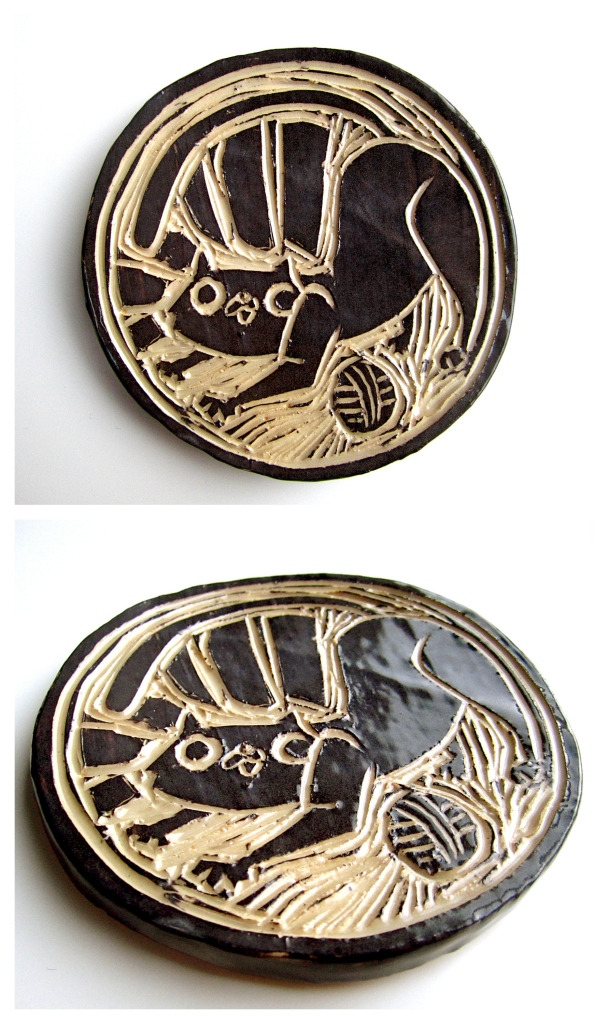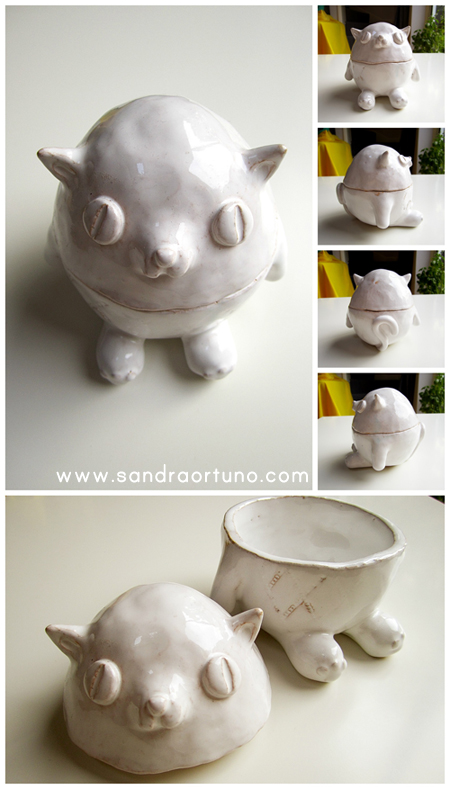Scroll down for the English version.
Hace un tiempo, una amiga me regaló un montón de lana para hacer lo que en inglés se conoce como needle felting, o fieltrado con aguja (que suena súper mal). A grandes rasgos, consiste en esculpir figuras usando este tipo de lana y unas agujas especiales.
Por circunstancias que serán reveladas en su momento (chanchán), no he podido ponerme a experimentar este hobbie hasta justo ayer. No tengo todo lo necesario, puesto que tuve que usar la parte de esponja de un estropajo para apoyarme y seguramente las agujas que me compré sean bastante reguleras (y la lana no estaba muy peinada). Sin embargo, a pesar de que sé que tiene sus fallos, éste fue mi primer intento con el needle felting.
(Sí, los ojos son Photoshop, pero es que todavía no tengo ojos que ponerle, los acabo de encargar por eBay.)
 Some time ago, a friend gave me a bunch of wool for needle felting. In broad terms, needle felting consists of sculpting figures using this kind of wool and some special needles.
Some time ago, a friend gave me a bunch of wool for needle felting. In broad terms, needle felting consists of sculpting figures using this kind of wool and some special needles.
Due to some circumstances which will be revealed in due course (suspense music), I haven’t had free time to sit down and experiment till yesterday. I guess I haven’t got all the proper equipment though, since I had to use the sponge bit of a scourer to rest the piece while pricking it and I bet my needles aren’t precisely the best (plus the wool wasn’t as combed). However, even though I know it’s got some mistakes, this was my first attempt at needle felting.
(Yep, it’s got Photoshop eyes, but I still haven’t got toy eyes – I just ordered them from eBay!)





